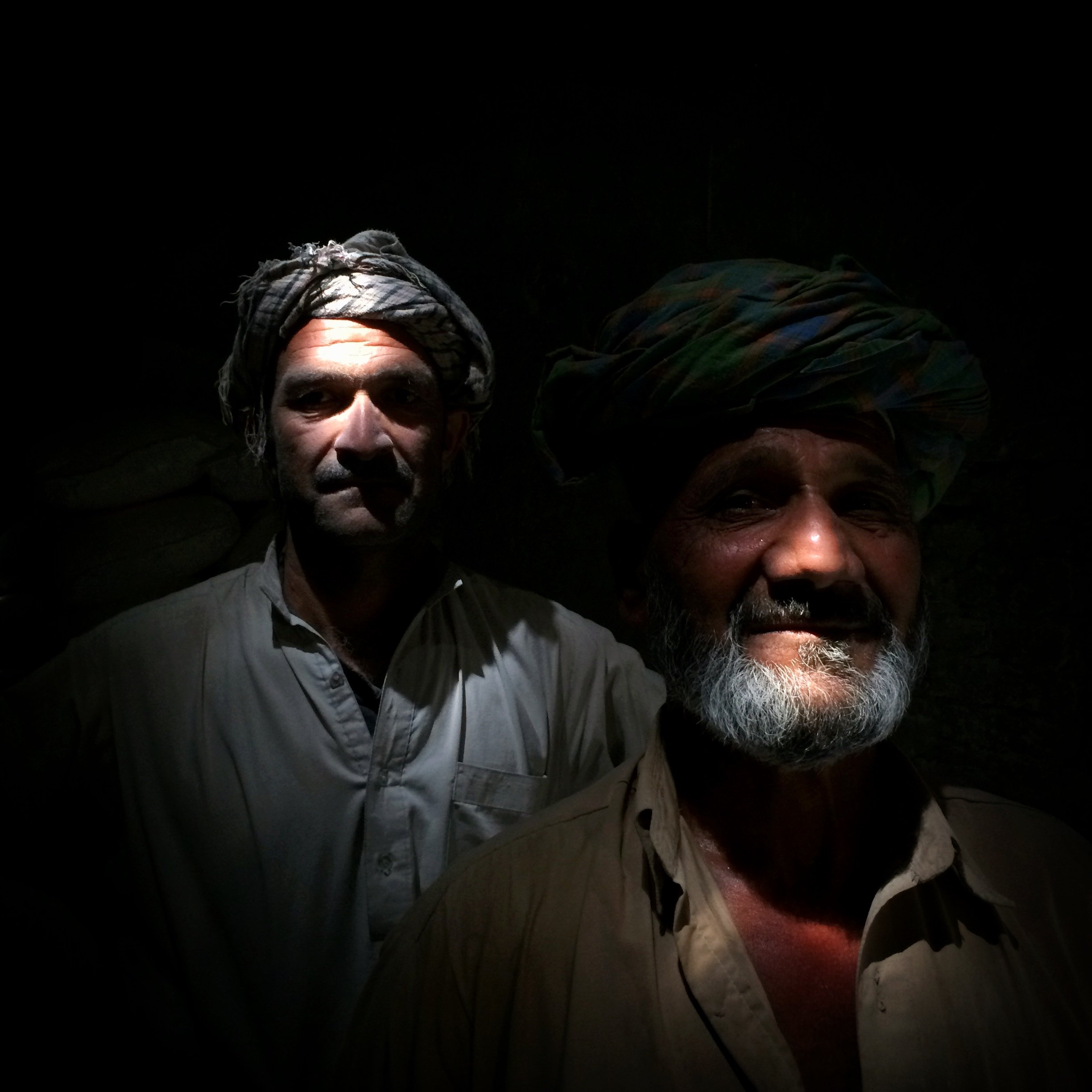During my stay in Afghanistan (May 2015), I had the opportunity to meet children and teenagers who had to work to support their families. They expressed their wishes, accompanied by smiles, for the same educational opportunities as children in other parts of the world, desiring a chance to pursue the kind of life and future they aspired to. Additionally, Afghan women, who had been deprived of their freedom to think, dress, and choose their lifestyle under the rule of the Taliban and the misogynistic culture of their country, have now embarked on a restless struggle to attain more rights and freedoms in the limited opening that has occurred in Afghan society.
Afghanistan, with its ancient, poetic, and mystic culture that has nurtured numerous Persian-language writers, is a land of vibrant colors and life. Its people are currently striving to wipe away the dust accumulated during the long years of war, seeking to restore their country's true essence—a radiant place adorned with beautiful colors. Due to the challenging and complicated situation in Afghanistan, where photography can be difficult and the reaction to professional cameras is often less than friendly, I made the decision to capture this collection using my iPhone camera.

In Mazar-e-Sharif, a woman draped in a burqa, traditional Afghan attire, walks past the revered "Roze Sharif" shrine, where countless white pigeons, symbolic of freedom in Afghanistan, find sanctuary.

In Mazar-e-Sharif, the rise of plastic recycling over the past decade emerges as one of Afghanistan's most commendable environmental initiatives.

In Mazar-e-Sharif, a stark reality unfolds: only 6% of births in Afghanistan receive official documentation, leaving the majority of Afghan children without an identity or nationality, rendering them invisible in societal eyes.

In Mazar-e-Sharif, meet Mastaneh, a 55-year-old women's rights activist. Despite international recommendations in June 2014 urging the Afghan government to end prosecutions of women for alleged moral crimes, no action was taken. Further exacerbating the plight, high-profile women, including police officers and activists, faced a relentless series of attacks and threats. Regrettably, the government's response remained inadequate, failing to implement meaningful measures to safeguard at-risk women.

In Kabul, the Darul Aman Palace stands as a poignant symbol of faded grandeur. Once a majestic and ornate edifice from the 1920s, it now lies derelict, bearing the scars of years of civil war.

Millers engaged in their craft, diligently at work in their workspace.

Mazari-Sharif, Afghanistan, May 2015

In the outskirts of Mazar-e-Sharif, May 2015, meet Zahir, a 9-year-old boy shouldering the grueling responsibility of a brick-maker. With a daily output of 600 bricks, working tirelessly six days a week, the annual tally is dishearteningly straightforward. Yet, quantifying the lifelong toll on Zahir is far more complex: his early entanglement in labor exacts a lifelong price, robbing him of health, education, and future opportunities.

In Mazar-e-Sharif, May 2015, meet Sanjar, a 30-year-old beekeeper who grapples with a hidden truth: his identity as a gay man. In Afghanistan, the LGBTQ+ community navigates perilous legal and social terrains. Homosexuality and cross-dressing stand as grave offenses, carrying potential penalties as severe as the death sentence.

In Kabul, May 2015, a sense of boldness emerges among certain women, emboldening them to navigate public spaces without the constant shadow of arrest or physical retribution. Remarkably, some even embrace the freedom to don high heels, symbolizing a subtle yet significant shift in societal norms.

In Kabul, May 2015, meet Farshad, a 10-year-old who has traded his school books for a role in a traditional café to support his family. While some families perceive early work as beneficial, shaping a child's future, the reality underscores the complexities and challenges of such choices.

In Kabul, many residents frequent restaurants for their midday meals. Here, a chef momentarily pauses from his duties at a traditional eatery.

In the outskirts of Mazar-e-Sharif, May 2015, brick production stands as a stark representation of forced labor in Afghanistan. This labor-intensive process involves a diverse group, comprising men, women, adults, and children, encompassing both migrant and local workers.

In Mazar-e-Sharif Bazaar, May 2015, meet Masoud, an 8-year-old who, after school hours, takes on the task of selling wool. Alarmingly, UNICEF reports suggest that as many as 30 percent of primary-school-aged children in Afghanistan are engaged in labor. For many, the earnings they bring in become essential for family survival. Tragically, the compulsion to work often stems not just from employers but also from familial economic pressures.

In the streets of Kabul, a man openly indulges in cannabis, highlighting its prevalence as the second most commonly used drug in Afghanistan's urban areas. Alarmingly, an estimated 7.5% of Afghan adults engage in illegal drug consumption.

In Kabul, May 2015, a sewing shop caters to women crafting garments that reflect evolving freedoms and societal norms. During the Taliban regime, women faced stringent dress codes, mandating full coverage, including their eyes. While contemporary times theoretically allow women greater sartorial choice, modern attire remains more prevalent within familial and female gatherings, with traditional clothing still dominant in public spaces.

In Kabul, May 2015, the shadow of conflict looms large, with frequent bombings underscoring the tenuous security landscape. Every major shop and establishment fortifies its premises with heavily armed security guards, reflecting the pervasive need for protection in the city.

Children joyfully play in a Kabul alley, capturing moments of youthful resilience amidst the backdrop of urban challenges.

In the suburbs of Mazar-e-Sharif, May 2015, Jabbar, a 19-year-old grappling with heroin addiction, stands against a wall surrounded by fellow users consuming various substances. Beyond its global dominance in opium production, Afghanistan faces a harrowing surge in domestic drug consumption. Shockingly, the number of Afghan drug addicts has skyrocketed to nearly three million, a drastic increase from less than 500,000 just two years prior.

In the suburbs of Mazar-e-Sharif, May 2015, a sand mining company stands as a testament to the limited industrial advancements made over the past decade.